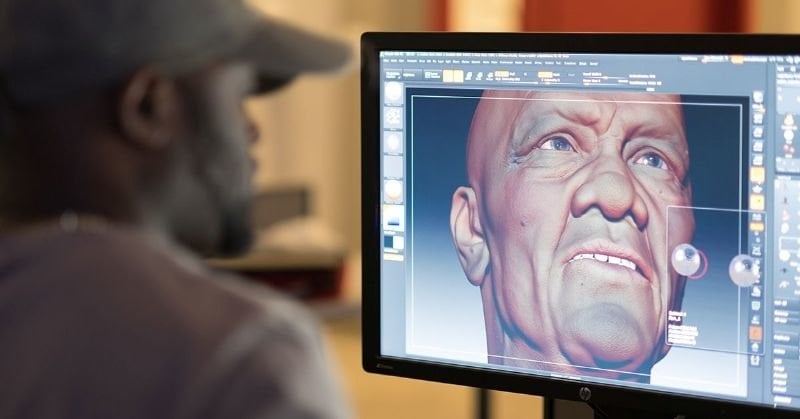In today's construction industry, strong visual communication is just as critical as technical skills. From winning bids to ensuring site safety, mastering basic graphic design and AI tools can dramatically improve how teams present information, share updates, and make smarter decisions across every stage of a project.

1. Why Graphic Design is a Game-Changer in Construction
Let's face it—most construction documents are still trapped in dense spreadsheets or dry text reports. But in an industry where deadlines are tight and communication is critical, poor visual communication leads to misunderstanding, inefficiencies, and lost opportunities.
Here's how visual design directly impacts construction outcomes:
A. First Impressions in Bids and Proposals
A clean, well-designed proposal stands out in a pile of documents. It shows attention to detail, organization, and professionalism. Color-coded timelines, progress charts, and clear page layouts help stakeholders quickly grasp your value.
B. Better Stakeholder Engagement
Whether you're explaining phasing to investors or logistics to subcontractors, visuals are easier to digest than walls of text. Timelines, workflows, or annotated renderings clarify intent fast.
C. Enhanced Job Site Safety
On-site signage must be instantly understandable. Using icons, large typography, and consistent formatting helps workers recognize risks and follow procedures without delay.
D. Credible Marketing and Branding
Developers and contractors increasingly need to promote themselves online. A consistent visual identity across brochures, social media, project signage, and your website makes your brand more memorable.
E. Smarter Documentation
Reports on environmental impacts, inspections, or project handovers are easier to read and more convincing when designed with clarity and visual hierarchy.
In short, graphic design is not just about ''making things pretty''—it's about making complex information usable.
2. Core Design Skills Every Construction Professional Should Know
You don't need a design degree to make an impact. Here are the most valuable design skills to learn if you work in construction:
A. Layout & Hierarchy
Understanding layout means you know where to place key information so it's seen and understood. You'll use this skill when creating:
Project overviews
Bid packages
Equipment plans
Safety briefings
B. Typography
Readable fonts and thoughtful spacing ensure your message comes through, whether it's on a poster or in a 20-page report.
C. Color Usage
Colors aren't just decorative—they indicate priorities, risks, or stages. A construction report might use:
Red = danger or delay
Green = complete
Blue = pending approvals
D. Infographics & Icons
From PPE icons to crane operation zones, well-designed symbols can replace paragraphs of explanation.
E. Photo Editing
Photos add impact—but raw images from the field often need cropping, brightening, and labeling before they're ready for use in professional presentations.
3. Beginner-Friendly Courses Tailored for Construction Teams
Most design courses focus on branding or creative portfolios—but construction design requires function over flash. Here are training options focused on practical utility:
A. Canva for Project Communication
Platform: Canva.com
Time: 2–3 hours to get started
Skills: Slide layouts, progress boards, branded templates
Ideal For: Engineers, coordinators, office managers
Example: Use Canva to build a weekly progress update with photos, issues, and budget markers—shared as a visual PDF for your client.
B. Photoshop Basics for Field Imagery
Platform: LinkedIn Learning / Coursera
Time: 8–12 hours
Skills: Editing site photos, adding annotations, exporting for print/web
Ideal For: Real estate teams, marketing staff, architects
Example: Polish a drone photo by adding project branding, outlining active zones, and creating a high-resolution banner for a launch event.
C. Illustrator for Diagrams & Icons
Platform: Skillshare, Udemy
Time: 10–15 hours
Skills: Create logistics plans, safety posters, process diagrams
Ideal For: Safety officers, site planners, urban designers
Example: Design a logistics map showing delivery gates, laydown areas, and pedestrian routes, to be posted around the site.
D. CAD to Graphic Workflow (AutoCAD + Adobe Suite)
Platform: YouTube, ArchDaily Academy
Time: 6–10 hours
Skills: Export linework from CAD, enhance visuals in Illustrator or InDesign
Ideal For: Architects, planners, senior engineers
4. What Software to Prioritize (And When to Learn It)
Here's a tiered software roadmap for construction teams with zero design background:
| Software | Use | Learn When |
|---|---|---|
| Canva | Proposals, updates, signage | Start here |
| Photoshop | Editing photos, presentation visuals | After Canva |
| Illustrator | Icons, safety diagrams, infographics | After Photoshop |
| InDesign | Handover documents, reports | Optional—advanced layout |
| Revit/AutoCAD | Plans and technical drawings | Industry standard tool |
Bonus: Tools like Snagit (for quick annotations) and Figma (for collaboration) can also be helpful.
5. A Practical 5-Month Learning Plan
Month 1:
Master Canva
Create company-branded slides
Build a one-page project overview
Month 2–3:
Dive into Photoshop
Edit and annotate site photos
Design polished cover pages
Month 4:
Learn basic Illustrator
Create icons, infographics, and logistics visuals
Month 5:
Build a company visual toolkit
Standardize proposals and safety boards
Start an internal visual template library
This structure spreads the workload and ensures skills are retained through application.
6. AI Tools Transforming Construction Communication & Planning
AI isn't just hype—it's actively reducing errors, boosting speed, and improving decision-making in the field. Here's how:
A. AI for Estimating and Takeoffs
Togal.AI: Scans PDFs for dimensions, areas, and quantities—saves hours per bid.
Beam AI: Handles estimating with 90% automation.
Why It Matters: Even small teams can bid more projects without hiring extra estimators.
B. AI Scheduling Tools
ALICE Technologies: Simulates millions of build sequences to optimize timelines.
Saves 10–17% in duration and 14% in labor costs on average.
Use Case: Adjust build order when delays hit—without manually rewriting the schedule.
C. AI for Site Monitoring & Safety
Uses cameras and sensors to detect hazards, monitor workers, and log unsafe behavior.
Example: Cameras identify a worker not wearing a harness in a fall zone—AI flags it instantly.
D. AI-Driven Project Management
Procore Copilot: Automates RFIs, meeting notes, and change order summaries.
Zepth: AI flags risky patterns from project data before they cause delays.
Why It Matters: Reduces admin tasks, frees up engineers to focus on site performance.
E. Generative Design Assistants
Tools like Civils.ai generate quick feasibility studies, layout options, and project templates.
Use Case: Speed up early-stage planning with 3D massing models or road layout suggestions.
7. Combining Design & AI for Real Impact
Here’s how to blend design tools and AI platforms for better communication:
| Scenario | Design Tool | AI Tool | Outcome |
|---|---|---|---|
| Weekly client update | Canva | Procore Copilot | Visual PDF + auto-generated notes |
| Handover documentation | InDesign | Zepth | Branded report + AI risk review |
| Safety signage rollout | Illustrator | — | Icons/posters for job sites |
| Bid proposal with cost sheet | Photoshop + Canva | Beam AI | Visual deck + AI takeoff + budget |
FAQs
Q1: I’m a site engineer. Should I really care about design?
Yes—clear reports and visuals help your team and clients understand your progress and challenges faster.
Q2: Is Photoshop too advanced?
Not at all. Most basic functions—crop, brighten, annotate—can be learned in under a day.
Q3: Can I skip Adobe and just use Canva?
For many use cases, yes. But Adobe tools are better when precision, scalability, and high-end polish are required.
Q4: What if I have no time to learn?
Start small. Even spending 1–2 hours per week on Canva will pay off quickly. Use templates, and build as you go.
Q5: Are there industry-specific templates?
Yes—search “construction” or “architecture” in Canva or look for design bundles on marketplaces like Envato or Creative Market.
Conclusion
Visual communication is no longer just ''to have'' in construction—it's a core part of your competitive edge. From winning bids faster to delivering updates clearly, strong visual skills help you earn trust and stand out in a crowded field.
Pair those skills with smart AI tools, and you're not just building structures—you're building efficiency, confidence, and a professional brand.
Ready to start? Pick a tool, try a course, and transform how your construction work is seen.




